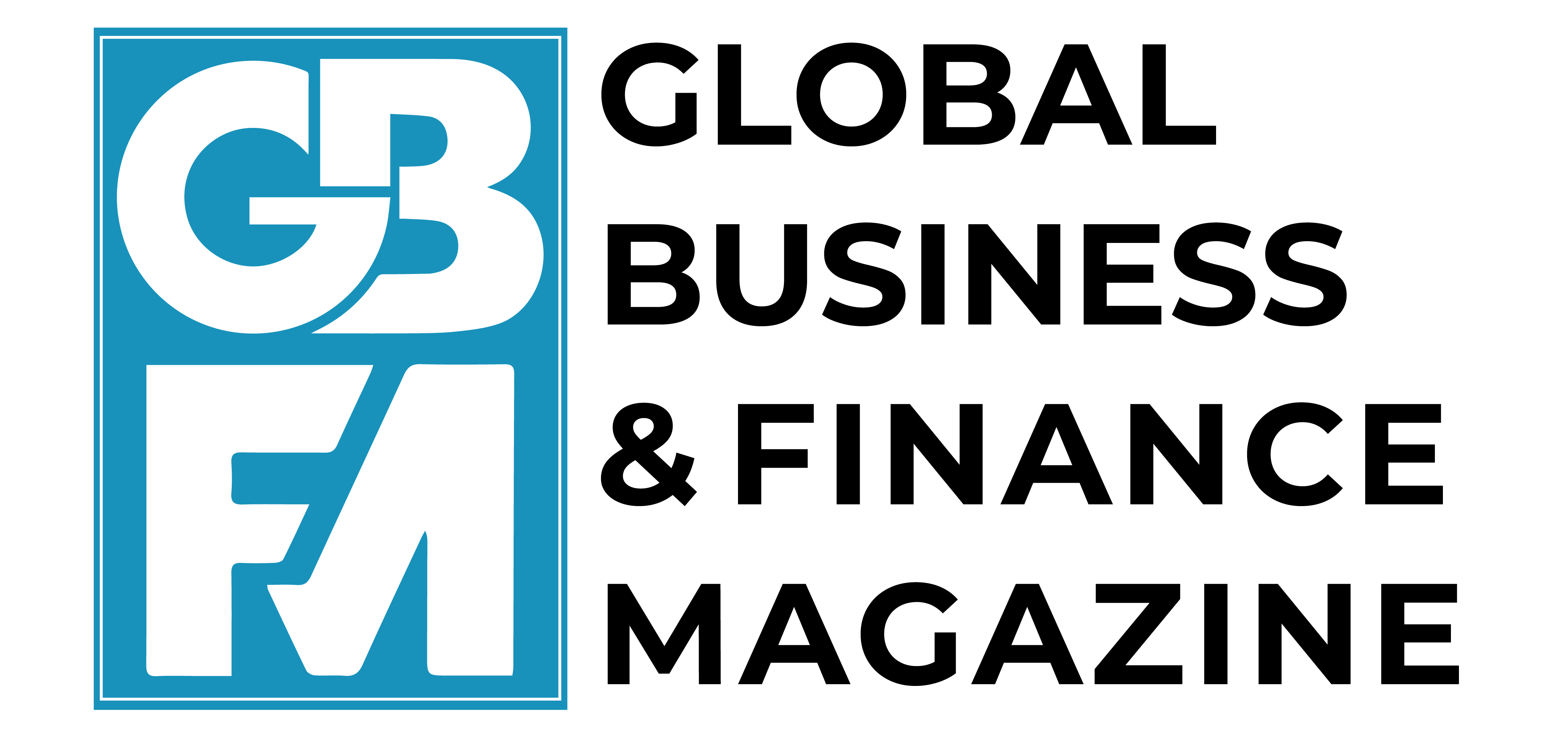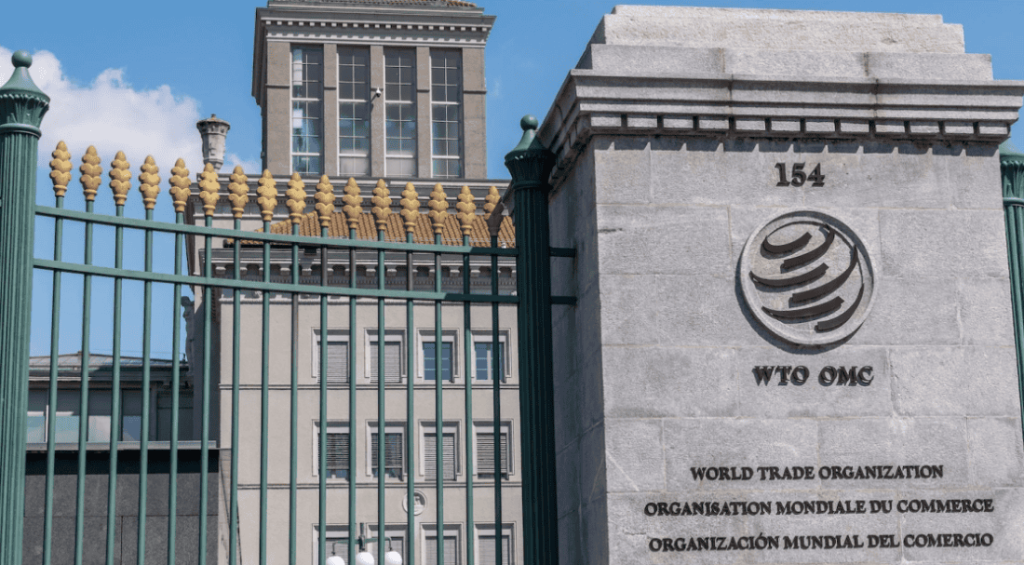The US embrace of power politics in the trade arena violates both the letter and spirit of the WTO’s General Agreement on Tariffs and Trade, undermining the integrity of the multilateral trading system. This column suggests that such violations are unlikely to cease in the foreseeable future. Bipartisan consensus in the US favours a toothless WTO, a position at odds with most WTO members. If the US continues to disregard its obligations, the best option for preserving the credibility of the WTO would see the US withdraw from the Agreement.
The advent of the second Trump presidency has caused the worst crisis that the WTO has experienced. It is not meaningful to try to detail the unprecedented magnitude of tariffs that have been announced, partly implemented, temporarily withdrawn, and reinstated at the whims of President Trump. We still do not know whether the Trump administration will manage to impose all of its desired tariffs in light of challenges by various US courts concerning their legality under domestic law. Nor do we know what outcomes will result from bilateral negotiations pursued by the US with various countries. However, it is clear that the policies the Trump administration is pursuing violate fundamental commitments in the WTO Agreement, as well as its spirit:
- The US committed to respect thousands of binding tariffs, negotiated with the rest of the WTO membership, as part of its acceptance of the WTO Agreement. The US is disregarding these obligations by violating the core prohibition to unilaterally increase duties that have been capped (Art. II GATT).
- The bilateral deals of the second Trump administration, such as those with the UK and China, violate the most-favoured nation (MFN) non-discrimination clause (Art. I GATT) by not being applied to all WTO members.
- The bilateral deals also defy the quintessential purpose of the WTO – promoting multilateral negotiations – which can be carried out either on a product-by-product basis or on a more global scale (Art. XXVIIIbis).
- The US has not paid its WTO membership fee for two years running (2023, 2024), which has been financially challenging for the WTO.
- The US continues to cripple the dispute settlement system – the crown jewel of the agreement – by blocking the appointments of new Appellate Body judges, thereby undermining enforcement of the agreement.
The current US attitude differs radically from its attitude during the Uruguay Round negotiations. As documented in various publications (e.g. Mavroidis 2022), the 1994 quid pro quo for the US to abandon recourse to unilateral measures (Section 301) was the expansion of the multilateral trading system’s coverage to services and intellectual property rights, as well as the introduction of compulsory third-party adjudication. The US had suffered from the EU’s attitude towards blocking the adoption of a series of reports in the 1980s condemning various aspects of the EU Common Agricultural Policy (CAP) and did not want to see this experience repeated.
Shortly after the WTO Agreement went into force, the US became frustrated by the discipline the agreement imposed. It lost several disputes regarding safeguard tariffs due to the demanding standards that WTO panels and the Appellate Body set for the lawful imposition of such tariffs. The US also lost a large number of disputes regarding anti-dumping measures, in particular due to its use of the zeroing methodology in the calculation of dumping margins. 2 US dissatisfaction during this period did not concern the law itself, but the manner in which WTO adjudicating bodies understood the commitments in the realm of contingent protection.
For the current US administration, it is no longer contingent protection that is the concern; rather, it is the fundamental WTO disciplines on negotiated tariff levels. The administration apparently does not think that the US should be bound by these obligations, a view that seems widespread in the US. 3 Destler (2005) and Mutz (2021) have supplied evidence for a bipartisan consensus that US trade policies should not be restrained by international agreements. This attitude is also reflected in the preferential trade agreements resulting from US negotiations. The most recent binding free-trade area signed by the US was the USMCA, the successor to NAFTA, which was negotiated under the first Trump administration. However, the revisions of the agreement for the most part implied the watering down of US commitments under NAFTA. After USMCA, the Biden administration concluded a series of Trade and Investment Framework Agreements – non-binding instruments, or ‘talk clubs’ at best. The new administration picked up where President Biden left off. President Trump wants to renegotiate the USMCA (which he effectively discarded when imposing his new tariff policy) as well. His administration is also signing non-binding ‘deals’ with all those eager to negotiate in order to avoid the new US tariffs.
The recent US measures have plunged businesses into unprecedented uncertainty regarding the conditions for trade with the US. While certainty per se has not been explicitly contracted in the GATT/WTO, it is very much part of the desired result. The uncertainty with the current administration does not concern whether the US will respect its WTO bindings – it seems quite clear that it will not. The uncertainty instead concerns the ultimate levels of the illegal tariffs and other trade barriers. 4
Violations are likely to continue
Several factors suggest that the US violations will continue for the foreseeable future.
1) The US has a history of conflicts with multilateral rules
A history of large-scale trade protection in the US must go back to the Smoot-Hawley Tariff Act of 1929, which did not violate any existing multilateral commitments. The US in 1929 had not joined the League of Nations, which had some rudimentary provisions on international trade. But this was an act of unilateralism with no regard for negative international spillovers. Luckily, the experience of the Act (and the reaction to it from other countries) provided the impetus to establish the General Agreement on Tariffs and Trade (GATT).
The first large-scale violation of multilateral rules committed by the US came in 1971. Faced with macro-economic imbalances, President Nixon imposed a flat 10% import surcharge on all goods irrespective of origin to force trading partners to revalue their currencies. But the US acted within the rules of the system, in that it defended its measures before the GATT by invoking the balance of payments exception in Article XII. A Working Party nonetheless overlooked the advice provided by the IMF and found against the US (Irwin 2013).
The next time the US systematically violated multilateral rules was under the Reagan administration. Concerns in the US during the 1980s regarding its trade imbalance were increasing, informed by the belief that these imbalances signalled that trade rules were unfair and to the disadvantage of the US. As reported by Bhagwati and Irwin (1987), former Arizona Governor and Democratic presidential candidate Bruce Babbitt even proposed that countries with persistent trade surpluses with the US should face tariffs across-the-board rising to 100%. 5 President Reagan declared: “We are always willing to be trade partners, but never trade patsies”. 6 To address trade imbalances, the Reagan administration requested and agreed on voluntary export restraints from a host of nations – mainly Japan, a clear violation of Article XI of GATT. The US further threatened trade sanctions for nations that refused to adhere to US standards for trade in services and protection of intellectual property rights, thereby violating both the spirit and the letter of the GATT. The US eventually abandoned this policy when an understanding was reached to negotiate multilateral agreements in these two areas.
While the US was a driving force behind the creation of the WTO, it soon became frustrated by the constraint that the agreement, as implemented, imposed. Of particular concern was the restrictions the WTO imposed on the ability of the US to shield its domestic markets through contingent protection. Both the George W. Bush and Barack Obama administrations continued to use the contentious ‘zeroing’ procedure in anti-dumping investigations. While many countries have violated the WTO Agreement, the repeated nature of the US breaches makes them stand out as violations not only of the letter of the agreement (as interpreted by panels and the Appellate Body), but also of its spirit.
Unease built up early in the US (and elsewhere) regarding the Chinese economy’s lack of transformation to a regular market economy. It was held that government market interventions had led China to amass a huge trade surplus (Mavroidis and Sapir 2021). President Obama inaugurated the “Pivot to Asia” foreign policy strategy to enhance the US presence in that part of the world.
The main break with the multilateral system came under the first Trump administration, which introduced a series of blatant violations of the GATT/WTO. To address concerns regarding China, the administration muscled through the Phase One agreement. 7 Characterised by Hufbauer (2020) as “managed trade”, it committed China to purchasing specific quantities of US goods. This agreement violated both the letter and the spirit of the WTO. For instance, it clearly violated MFN, as China would not extend the same courtesy to other WTO Members. 8 Additionally, the tariffs on aluminium and steel violated the basic trust among members to not use the national security exception for outright protectionism. A panel also found that this violated the letter of the agreement. But since the US had paralysed the Appellate Body, its appeal went into the void, and the US remained unpunished.
The Biden administration did little to change the previous administration’s policies. President Biden did not hesitate to call China “America’s most consequential geopolitical challenge” (Liptak 2022). The Biden administration maintained most of the tariffs that the first Trump administration had imposed (both China-specific and those like the steel tariffs), and it did not allow for the appointment of new members to the Appellate Body. The Biden administration thus contributed to the waning of multilateralism by omission through passivity. Trump’s second administration has picked up from where his first administration, and the Biden administration, left off. The current scale of deviation from multilateral rules is simply unprecedented. We are now facing for the first time since the inception of the multilateral system a total disregard for its rules.
US scepticism toward the GATT/WTO system has been brewing for quite some time. Inaction by the Biden administration signalled that a lack of commitment to the multilateral system is not specific to President Trump, nor to the Republican Party. A bipartisan consensus has emerged to the effect that the WTO does not serve US economic interests. It is also increasingly felt that the WTO benefits China in the broader strategic contest between the US and China. The US never explained exactly how the world trading system disfavoured it. Neither of the last three administrations sought to address shortcomings of the WTO Agreement. At a moment when amendment and update of the rules is required, the US has largely checked out.
2) The WTO Agreement renegotiation options cannot deliver second Trump administration-type tariff hikes
The discontent of the second Trump administration with the WTO Agreement seems to concern mainly the tariff levels to which the US committed. This is not surprising as such, since these commitments reflect economic and political realities that prevailed some 30+ years ago. The Agreement does allow for certain upward adjustments of tariffs. But these options are only relevant for adjustments of a limited number of tariffs. For instance, Art. XXVIII GATT allows members to increase tariff bindings, but requires other tariffs to then be lowered in a “substantially equivalent” manner to compensate trade partners. It is also possible to impose tariffs as per the Safeguard Agreement. These are intended to be temporary measures to address problems in specific industries, and can only be imposed after investigations. It is also possible to impose countervailing duties in case imports have been subsidised. Tariffs can also be renegotiated more broadly, but only to lower their general level (Art. XXVIIIbis GATT). Hence, the WTO Agreement does not allow for broad increases in tariff levels, like those preferred by the current US administration.
3) Bilateral negotiations and/or countermeasures are unlikely to restore US compliance
With the desire for increased protection deeply engraved in US politics, and no WTO-compliant ways to achieve this, US violations of its WTO obligations will likely continue. The magnitudes of these violations are liable to depend on how the rest of the WTO membership responds to US illegalities. There are several possible courses of action.
Simply accepting the US measures or challenging them before what is left of the WTO dispute settlement body will not remove the illegal US measures. A weak response is likely to encourage the current administration to impose further protections, in particular when it is discovered that the newly imposed tariffs have not removed trade imbalances, which are largely determined by other factors (e.g. Gagnon 2025). Another drawback of not challenging US illegalities is that it sets a precedent. Not only might the US be incentivised to repeat similar behaviour in the future, but other suitors might mimic it as well (assuming they have the bargaining power to do so).
Another option for those affected by the current US administration’s tariffs is to negotiate. For negotiations to be meaningful, there must be something to negotiate about, and this requires that other countries impose countermeasures on the US. Retaliatory tariffs are likely in the short run to lead to the further escalation of US tariffs (and possibly other trade barriers), making it harder to bring down tariffs to existing US tariff bindings; this is what happened when US announced its first tariffs against China, and China retaliated. President Trump’s response was to increase tariffs vis-à-vis all goods produced in China to an unprecedented 145%. We believe that the long-run effect of retaliation (especially if collective action can be overcome and big players manage to coordinate) will most likely be to induce the US to scale down its protectionist measures to some extent. 9 But retaliatory tariffs, with or without negotiations, are themselves new violations of the WTO Agreement. Retaliatory tariffs are also unlikely to bring down US tariffs more broadly to their bound levels, since this would be incompatible with Trump’s deep belief in tariffs as remedies for trade deficits.
Another serious problem with bilateral agreements from a WTO perspective is that they will lead other WTO members to violate MFN as well, unless they apply their renegotiated tariffs to the membership as a whole. Furthermore, President Trump has stated that some countries will be considered too small by the US to be offered the opportunity to negotiate, and will thus simply pay higher tariffs, the levels of which remain to be determined.
A US exit from the WTO seems to be the best solution from a WTO perspective
The best option for the WTO, and for the world economy, would be for the US to respect its WTO commitment. This does not seem likely to occur. We therefore believe that the best option from the point of view of the WTO would be for the US to leave the organisation. For the US, an exit from the WTO might have the advantage of allowing the US to apply whatever trade restrictions it desires with less damage to its international reputation (to the extent this is a concern).
A US exit from the WTO is unthinkable for some but not, it appears, for the US (Aarup 2021). Blustein (2017) reports that President Trump threatened to quit the WTO during his first term. And the US is currently reevaluating the merits of remaining in the multilateral institution as per its own declaration (Horseman 2025). Academics have been toying with the idea. Krueger (2025) has argued in favour of establishing a new trade alliance among countries willing to uphold multilateral rules, christening it the “Minus US Trade Organization” (MUTO) and arguing that MUTO would run parallel to the Multi-Party Interim Agreement, the agreement between some WTO members to submit their disputes to a surrogate Appellate Body formed in response to the US torpedoing the Appellate Body.
A counterargument to the claim that a US exit is the best option for the WTO – given current circumstances – is that it is important to have the US in the WTO as a counterweight to China, which also poses a serious (albeit different) threat to the WTO’s integrity. However, the US has so far showed little or no interest in collaborating with other countries on this issue. Second, the EU and the US seem to have different attitudes towards China (Allison 2017, Kefferpütz 2020, Liboreiro 2025). While the EU believes that it can solve its problems vis-à-vis China within the WTO framework, the US does not share this belief. And judging by the disputes that the EU and the US have initiated before the WTO, they have different priorities as well: EU disputes typically concern intellectual property, while US disputes concern subsidisation. Third, it is unclear why the US would be hindered to collaborate with other countries regarding Chinese trade practices if the US were to leave the WTO. To the extent that the US cares about WTO disciplines, it would be freer to act against China if not bound by the rules of the DSU.
Modes for exit
Art XV.1 of the agreement establishing the WTO provides an option for members to voluntarily and permanently leave the WTO. The exit takes effect six months after a notice of withdrawal has been submitted. Importantly though, members can only use this option for their own exit from the organisation; the WTO regime includes no rules regarding exclusion. 10
What if the US decides to stay? WTO members could, assuming they have the political will to this effect, be inspired by Article 60 of the Vienna Convention on the Law of Treaties (VCLT), which reads in part:
- A material breach of a bilateral treaty by one of the parties entitles the other to invoke the breach as a ground for terminating the treaty or suspending its operation in whole or in part.
- A material breach of a multilateral treaty by one of the parties entitles: (a) the other parties by unanimous agreement to suspend the operation of the treaty in whole or in part or to terminate it …
- A material breach of a treaty, for the purposes of this article, consists in … the violation of a provision essential to the accomplishment of the object or purpose of the treaty.
- The foregoing paragraphs are without prejudice to any provision in the treaty applicable in the event of a breach.
In contrast to the exit option in the WTO Agreement, the above-cited provision concerns the possibility for affected parties to request and impose exclusion (paras. 1 and 2). As things stand, the relevance of this provision in the WTO legal order has not been officially sanctioned. Nonetheless, as this provision codifies customary international law, there are solid arguments in favour of its relevance. The current US administration’s policies are clear material breaches of the treaty that defy its purpose, so paras. 1-3 are satisfied. Moreover, para. 4 is satisfied as the WTO has no specific provision regarding exclusion. But WTO decisions are customarily taken by consensus, and it is inconceivable that other WTO members would reach a consensus on this issue, so a US exit is not a feasible option in practice.
Lacking consensus, part of the membership can alternatively seek to force a simple majority decision as per Art. IX.1 of the agreement establishing the WTO: “where a decision cannot be arrived at by consensus, the matter at issue shall be decided by voting”. This provision has never been used, so it is unchartered territory. But the possibility exists in the WTO rulebook.
A more pragmatic (and preferred, to us) solution would be that the US leaves temporarily and retains the option to take on its lawful rights and obligations when and if the climate in Washington is more favourable towards multilateralism. However, there is neither a rule condoning ‘temporary’ leave nor a precedent to this effect. The only existing option would be for the US to leave permanently and reapply when it so desires. There is no provision in the WTO contract enabling an accelerated procedure in such a case. 11 Consequently, the normal process for accession embedded in Article XII of the WTO Agreement would have to be followed.
Concluding remarks
The US was a driving force behind the creation of the GATT/WTO. However, it has long since abandoned its leadership role in the WTO. It has shown little interest in engaging in much-needed reform of the agreement; it now violates almost all of its tariff bindings; it violates the fundamental MFN provision; it continues to block Appellate Body appointments, paralysing a central feature of the dispute settlement system; and it does not pay its membership dues. In the choice of whether the US should or should not be a member, the burden of proof should fall on those who argue in favour of retaining the US as a member.
Source : VOXeu



































































